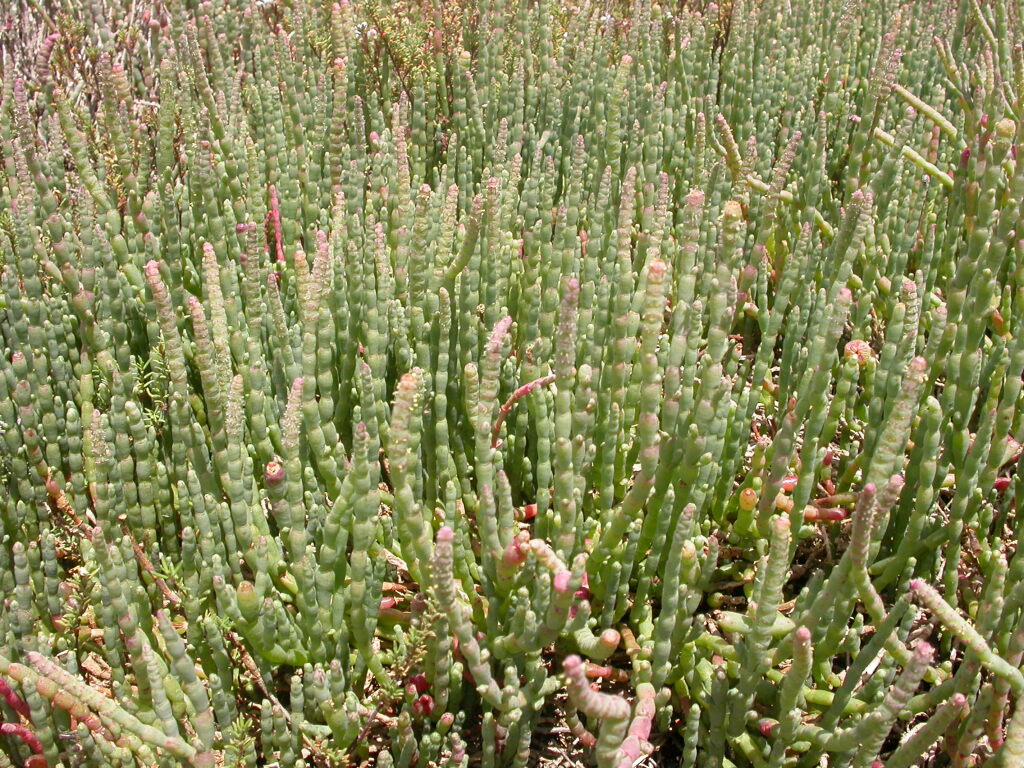Salicornia
L.Succulent monoecious or dioecious, perennial herbs or subshrubs, glabrous and apparently leafless. Branches segmented, with segments (articles) cylindric, cup-shaped or shortly 2-lobed at apex. Inflorescence spike-like, terminal, with flowers in cymules of 3–12 flowers each (forming false whorls), in axils of paired, fused, fleshy bracts; perianth succulent with fused segments; apex truncate, stamens and stigmas exserted through a vertical slit at anthesis; lobes 3, indistinct, 2 lateral and 1 short semicircular lobe above slit (sometimes a small lobe below slit); stamens 2; stigmas 2. Fruiting perianth spongy, finally falling entire from axis; pericarp membranous; seed ovate to orbicular, testa weak, papillose or with short curved hairs.
Aroumd 50 species, cosmopolitan, 3 native in Australia.
Molecular evidence has shown that Sarcocornia, in which Australian species were previously treated, is not supported as being distinct from Salicornia although the Australian and southern and eastern African species are included in a separate subgenus Afrocornia (Piirainen et al. 2017).
Walsh, N.G. (1996). Chenopodiaceae. In: Walsh, N.G.; Entwisle, T.J., Flora of Victoria Vol. 3, Dicotyledons Winteraceae to Myrtaceae, pp. 129–199. Inkata Press, Melbourne.
 Spinning
SpinningSynonyms
Piirainen, M.; Liebisch, O.; Kadereit, G. (2017). Phylogeny, biogeography, systematics and taxonomy of Salicornioideae (Amaranthaceae/Chenopodiaceae) – A cosmopolitan, highly specialized hygrohalophyte lineage dating back to the Oligocene. Taxon 66(1): 109–132.



